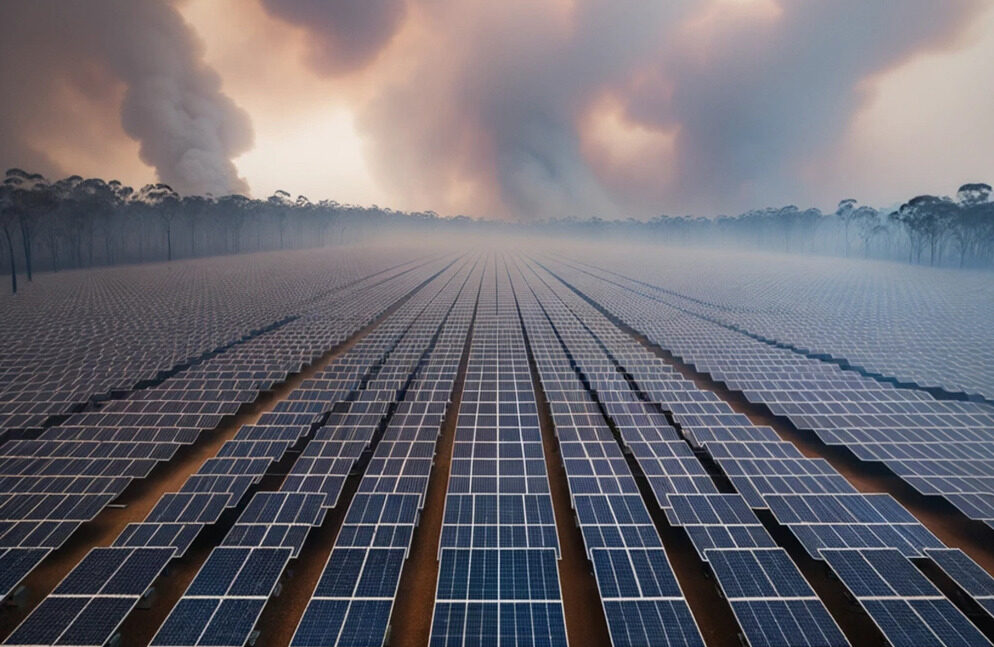Researchers from the University of New South Wales (UNSW) and Erlangen, Germany, have examined the impacts of Australia’s worst recorded wildfires, known as the Black Summer, in 2019 to 2020.
They estimated the “extreme haze” caused by the smoke and fine particulate matter in the air across New South Wales (NSW) caused solar output to drop by around 35 to 175 GWh. This equates to financial losses between USD 4 million to 19 million, or $6.1 to $29 million, for rooftop and utility PV system owners and investors.
Authors of the study, Ethan Ford, Ian Marius Peters and Bram Hoex, analysed 30-minute energy data from 160 geographically separated residential PV systems in NSW with a total capacity of 312 kW between November 6, 2019 and January 15, 2020. The team also looked at 17 particulate matter sensors distributed across NSW.
The total energy loss over the 71-day period for all 160 systems is estimated at about 4.2% to 0.8%. For one system in Wagga Wagga, the authors pointed wildfire smoke reduced PV power output by around 17% to 3% over the course of a “moderately hazy day (PM2.5 of 111 µg/m³).”
The study, to appear in the journal iScience, says “wildfire smoke attenuates solar irradiance and leads to soiling via the deposition of particles on the solar modules’ surfaces.” This impacts solar energy yield, which has implications for the reliability and commercial sustainability of PV installations, they added, especially as extreme wildfires are becoming more frequent as a result of climate change.
“Hence, a thorough and accurate understanding of how exactly wildfires impair PV output is vitally important for ensuring the service security of the future Australian power grid,” the authors said.
“As PV systems are sensitive to smoke and become ubiquitous, we propose employing them to support wildfire detection and monitoring,” they added.
The paper, ‘Quantifying the Impact of Wildfire Smoke on Solar Photovoltaic Generation in Australia,’ was conducted by researchers at UNSW’s School of Photovoltaic and Renewable Energy Engineering and the Forschungszentrum Jülich in Erlangen, Germany.
This content is protected by copyright and may not be reused. If you want to cooperate with us and would like to reuse some of our content, please contact: editors@pv-magazine.com.









By submitting this form you agree to pv magazine using your data for the purposes of publishing your comment.
Your personal data will only be disclosed or otherwise transmitted to third parties for the purposes of spam filtering or if this is necessary for technical maintenance of the website. Any other transfer to third parties will not take place unless this is justified on the basis of applicable data protection regulations or if pv magazine is legally obliged to do so.
You may revoke this consent at any time with effect for the future, in which case your personal data will be deleted immediately. Otherwise, your data will be deleted if pv magazine has processed your request or the purpose of data storage is fulfilled.
Further information on data privacy can be found in our Data Protection Policy.